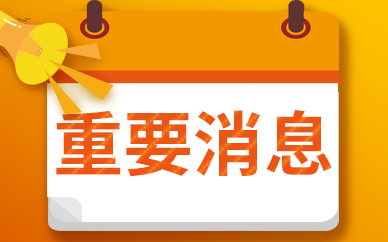 【资料图】
【资料图】
1. 最大堆
class MaxHeap: def __init__(self): self.heap = [] def parent(self, i): return (i - 1) // 2 def left_child(self, i): return 2 * i + 1 def right_child(self, i): return 2 * i + 2 def get_max(self): if not self.heap: return None return self.heap[0] def insert(self, item): self.heap.append(item) self._heapify_up(len(self.heap) - 1) def extract_max(self): if not self.heap: return None max_item = self.heap[0] last_item = self.heap.pop() if self.heap: self.heap[0] = last_item self._heapify_down(0) return max_item def _heapify_up(self, i): while i > 0 and self.heap[i] > self.heap[self.parent(i)]: self.heap[i], self.heap[self.parent(i)] = self.heap[self.parent(i)], self.heap[i] i = self.parent(i) def _heapify_down(self, i): max_index = i left = self.left_child(i) if left < len(self.heap) and self.heap[left] > self.heap[max_index]: max_index = left right = self.right_child(i) if right < len(self.heap) and self.heap[right] > self.heap[max_index]: max_index = right if i != max_index: self.heap[i], self.heap[max_index] = self.heap[max_index], self.heap[i] self._heapify_down(max_index)if __name__ == "__main__": max_heap = MaxHeap() max_heap.insert(1) max_heap.insert(2) max_heap.insert(0) max_heap.insert(8) print(max_heap.get_max())2. 最小堆
class MinHeap: def __init__(self): self.heap = [] def parent(self, i): return (i - 1) // 2 def left_child(self, i): return 2 * i + 1 def right_child(self, i): return 2 * i + 2 def get_min(self): if not self.heap: return None return self.heap[0] def insert(self, item): self.heap.append(item) self._heapify_up(len(self.heap) - 1) def extract_min(self): if not self.heap: return None min_item = self.heap[0] last_item = self.heap.pop() if self.heap: self.heap[0] = last_item self._heapify_down(0) return min_item def _heapify_up(self, i): while i > 0 and self.heap[i] < self.heap[self.parent(i)]: self.heap[i], self.heap[self.parent(i)] = self.heap[self.parent(i)], self.heap[i] i = self.parent(i) def _heapify_down(self, i): min_index = i left = self.left_child(i) if left < len(self.heap) and self.heap[left] < self.heap[min_index]: min_index = left right = self.right_child(i) if right < len(self.heap) and self.heap[right] < self.heap[min_index]: min_index = right if i != min_index: self.heap[i], self.heap[min_index] = self.heap[min_index], self.heap[i] self._heapify_down(min_index)3. 最小-最大堆
最小-最大堆的性质是:树中偶数层的每个节点都小于它的所有后代,而树中奇数层的每个节点都大于它的所有后代。
用途 双端优先级队列
class MinMaxHeap: def __init__(self): self.heap = [] def parent(self, i): return (i - 1) // 2 def left_child(self, i): return 2 * i + 1 def right_child(self, i): return 2 * i + 2 def get_min(self): if not self.heap: return None return self.heap[0] def get_max(self): if not self.heap: return None if len(self.heap) == 1: return self.heap[0] if len(self.heap) == 2: return self.heap[1] if self.heap[1] > self.heap[0] else self.heap[0] return self.heap[1] if self.heap[1] > self.heap[2] else self.heap[2] def insert(self, item): self.heap.append(item) self._heapify_up(len(self.heap) - 1) def extract_min(self): if not self.heap: return None min_item = self.heap[0] last_item = self.heap.pop() if self.heap: self.heap[0] = last_item self._heapify_down_min(0) return min_item def extract_max(self): if not self.heap: return None max_item = self.get_max() max_index = self.heap.index(max_item) self.heap[max_index] = self.heap[-1] self.heap.pop() if max_index < len(self.heap): self._heapify_down_max(max_index) return max_item def _heapify_up(self, i): if i == 0: return parent = self.parent(i) if self.heap[i] < self.heap[parent]: self.heap[i], self.heap[parent] = self.heap[parent], self.heap[i] self._heapify_up_max(parent) else: self._heapify_up_min(i) def _heapify_up_min(self, i): grandparent = self.parent(self.parent(i)) if i > 2 and self.heap[i] < self.heap[grandparent]: self.heap[i], self.heap[grandparent] = self.heap[grandparent], self.heap[i] self._heapify_up_min(grandparent) def _heapify_up_max(self, i): grandparent = self.parent(self.parent(i)) if i > 2 and self.heap[i] > self.heap[grandparent]: self.heap[i], self.heap[grandparent] = self.heap[grandparent], self.heap[i] self._heapify_up_max(grandparent) def _heapify_down_min(self, i): while True: min_index = i left = self.left_child(i) if left < len(self.heap) and self.heap[left] < self.heap[min_index]: min_index = left right = self.right_child(i) if right < len(self.heap) and self.heap[right] < self.heap[min_index]: min_index = right if i != min_index: self.heap[i], self.heap[min_index] = self.heap[min_index], self.heap[i] i = min_index else: break def _heapify_down_max(self, i): while True: max_index = i left = self.left_child(i) if left < len(self.heap) and self.heap[left] > self.heap[max_index]: max_index = left right = self.right_child(i) if right < len(self.heap) and self.heap[right] > self.heap[max_index]: max_index = right if i != max_index: self.heap[i], self.heap[max_index] = self.heap[max_index], self.heap[i] i = max_index else: break在这个实现中,MinMaxHeap类代表一个min-max堆,包含一个list堆,用于存放堆中的元素。 parent、left_child 和right_child 方法分别返回节点的父节点、左子节点和右子节点的索引。 get_min 方法返回堆中的最小元素,get_max 方法返回堆中的最大元素。 insert 方法将一个元素插入到堆中并维护堆属性。 extract_min 方法从堆中移除最小元素并保持堆属性。 extract_max 方法从堆中移除最大元素并保持堆属性。
_heapify_up、_heapify_up_min、_heapify_up_max、_heapify_down_min 和 _heapify_down_max 方法用于维护最小-最大堆属性。 _heapify_up 在向堆中插入元素后调用,以确保元素位于正确的位置。 _heapify_up_min 和 _heapify_up_max 由 _heapify_up 调用以维护最小-最大堆属性。 _heapify_down_min 和 _heapify_down_max 分别被 extract_min 和 extract_max 调用,以维护 min-max 堆属性。
-

python实现堆(最大堆、最小堆、最小最大堆) 世界看热讯
最小-最大堆的性质是:树中偶数层的每个节点都小于它的所有后代,而树中奇数层的每个节点都大于它的所有后代。
-

造纸术的发明课文三年级_造纸术的发明
1、传播:纸是以我国为中心向东身西逐步向世界各地传播的,首先东传朝鲜,日本。2、大约在四世纪末叶,中国造纸术传达室入朝鲜
-

招商信用卡停息挂账后果?影响信用吗?
现在使用信用卡消费的用户数不胜数,信用卡给大家带来便利的同时,也带来了一些不好的问题。比如过度消费,逾期等等。很多朋友因为自己消费没
-

天天资讯:降低企业风控成本改善市场流动性 上期所下调11个品种风控参数
云南铜业首席分析师张剑辉表示,本次上期所结合产业发展实际需要,下调相关品种交易保证金比例,在风险可控的条件下,进一步降低了企业风险管
X 关闭
无醇啤酒市场规模不断增长 预计到2025年规模将达到232.7亿美元
“没坐头”到“天天像过年”:“花儿”唱响西北民众生活变化轨迹
抵返人员发现2例初筛阳性 牡丹江开展区域核酸检测
中企承建尼日利亚最大水电站:年内还将实现3台机组发电目标
安徽淮南新增确诊病例1例、新增无症状感染者50人
X 关闭
python实现堆(最大堆、最小堆、最小最大堆) 世界看热讯
造纸术的发明课文三年级_造纸术的发明
招商信用卡停息挂账后果?影响信用吗?
天天资讯:降低企业风控成本改善市场流动性 上期所下调11个品种风控参数
十进制的数如何转换为十六进制(如何操作一个格式的商和余数)|每日热讯







